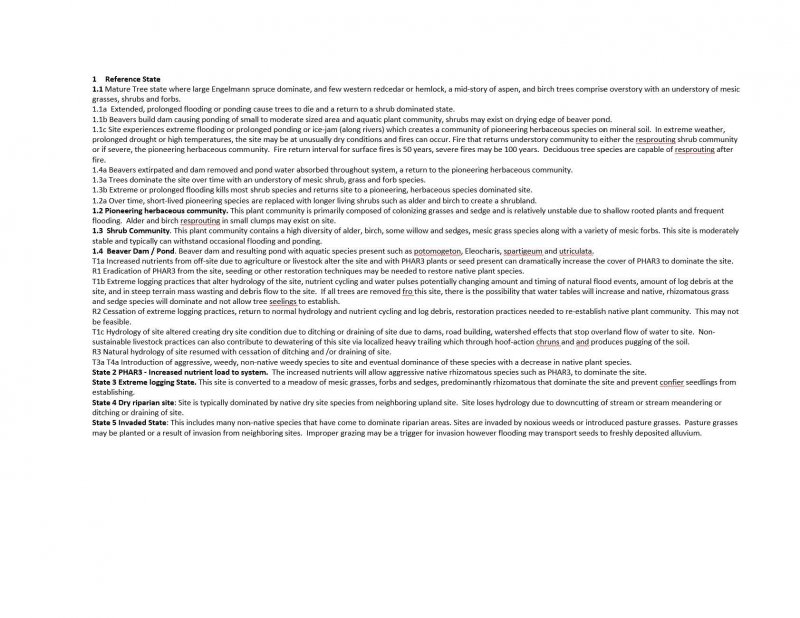
Natural Resources
Conservation Service
Ecological site F043AY589WA
Cryic, Aquic, Loamy, Flood Plains (Engelmann spruce/ladyfern)(PIEN/COSE/ATFI)
Last updated: 10/23/2020
Accessed: 12/22/2025
General information
Provisional. A provisional ecological site description has undergone quality control and quality assurance review. It contains a working state and transition model and enough information to identify the ecological site.
MLRA notes
Major Land Resource Area (MLRA): 043A–Northern Rocky Mountains
Major Land Resource Area (MLRA): 043A–Northern Rocky Mountains
Description of MLRAs can be found in: United States Department of Agriculture, Natural Resources Conservation Service. 2006. Land Resource Regions and Major Land Resource Areas of the United States, the Caribbean, and the Pacific Basin. U.S. Department of Agriculture Handbook 296.
LRU notes
Major land resource area (MLRA): 043A-Northern Rocky Mountains
Modal LRU – 43A01 - Okanogan Plateau
This LRU is composed predominantly of glaciated mountains and foothills. The soils tend to be loamy to sandy andisols, inceptisols, and mollisols with mixed or distinct ash surfaces. Recent alluvium, till, outwash and residuum from granitic or metamorphic rock are the dominant parent materials. Soil climate is a frigid or cryic temperature regime and xeric moisture regime with average annual precipitation around 450 mm (18 inches).
Classification relationships
This ES fits into the National Vegetation Standard’s Rocky Mountain & Great Basin Montane Riparian Forest Group and is most closely related to Washington State’s Natural Heritage Program’s Rocky Mountain Subalpine-Montane Riparian Woodland.
Ecological site concept
Ecological Site Concept:
This ES is found on poorly to somewhat poorly drained valley floors and drainageways. The sites are often affected by cold air drainage from the surrounding mountains. A water table is between the surface and 30 inches depth for much of the Mar-Jul period. They have cryic temperatures and a plant community dominated by subalpine fir, Engelmann spruce, ladyfern, horsetail, firethread sedge, and other forbs and shrubs. They have surface horizons developed from volcanic ash.

Figure 1.
Table 1. Dominant plant species
| Tree |
(1) Picea engelmannii |
|---|---|
| Shrub |
(1) Cornus sericea ssp. sericea |
| Herbaceous |
(1) Athyrium filix-femina |
Click on box and path labels to scroll to the respective text.

